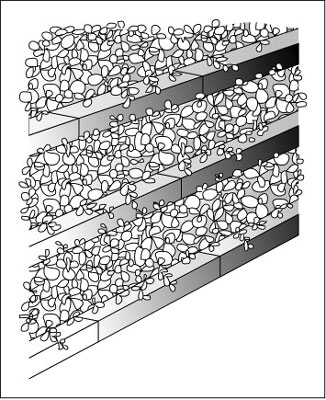Leveling and grading the ground around your home in preparation for planting grass seed for a new lawn can be a fairly simple but strenuous task. Good grass is only one and probably the least important reason you have to level the ground around your house. Preserving the foundation of your house is the other, more important reason.
If you live in some flat part of the country such as central Illinois, chances are you can do this job yourself. However, if you live on uneven, sloping ground as in Pennsylvania, you’re probably going to need some professional help to get your lawn properly graded.
Contractors can recognize drainage problems and are better equipped to handle problem sites. If you’re landscaping your whole yard, consider hiring a landscape architect. They can help you plan out everything from paths to decks, and, yes, lawns.
Your lawn needs to slope away gradually from the house so that rainfall can drain slowly away from the foundation. If rainfall runs toward your house, the water accumulates around the foundation walls, causing moisture to build up and weaken your foundation, or worse, seep through foundation walls and fill your basement with water. If your home is built on a slab or with no basement, moisture can seep into the wooden floor joists. The joists can rot, threatening the structural integrity of your home.
Ideally, the ground around your house should slope away about 1/4-inch for every foot or about 2 feet per 100 feet. In other words, at a distance of 100 feet from your house, the ground should be about 2 feet lower than it is at the base of your house.
To measure the slope accurately, drive a 3-foot-long wooden stake 1 foot deep into the soil at the base of your house. Measure a distance 100 feet away from your house and drive another 3-foot-long stake 1 foot into the ground.
Attach a string at ground level on the stake near the house, run the string out to the other stake, and attach it there so that the string is level. You can determine whether the string is level by laying a carpenter’s level on the string and raising or lowering the string so that the bubble appears within the grooves on the level.
Now measure the distance from where the string attaches at the far stake to the ground. If the drop measures from 3 to 6 inches up to 2 feet, you can do any light leveling yourself. If the drop is more than that or if the ground slopes upwards, you should probably hire a professional to do the grading for you. If you have really steep ground, consider building terraces or planting ground covers.

Before doing any grading or digging in your yard, locate your underground water and sewer lines, underground power and cable-TV lines, and underground natural gas lines. Call your utility providers and ask them to show you where the lines are.
If your house hooks up to its own well and/or you have a septic system, get out your surveyor’s map. Find the well, its water line, and the location of your septic drain field. If you don’t have a survey map, contact your city or county planning or building department and ask how to get one.

